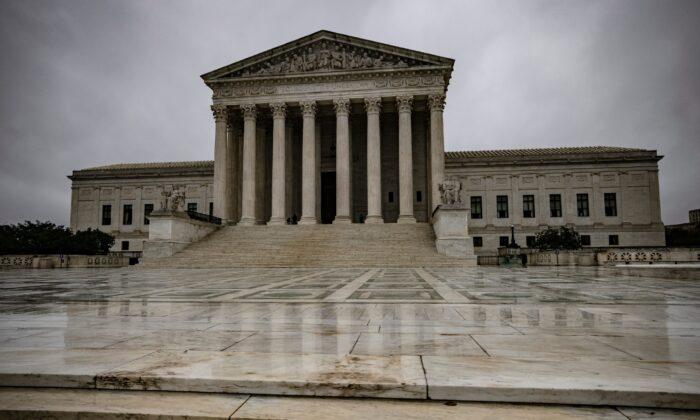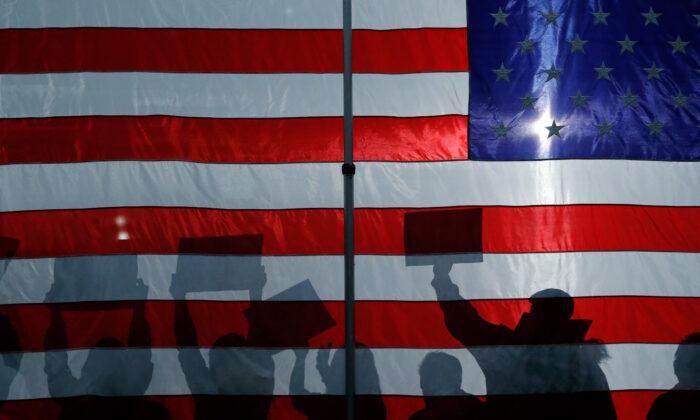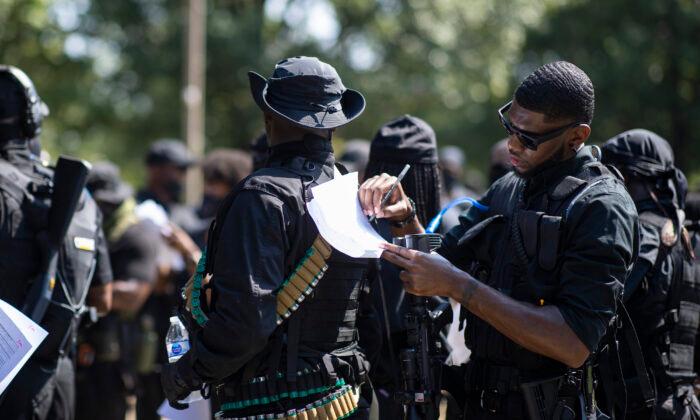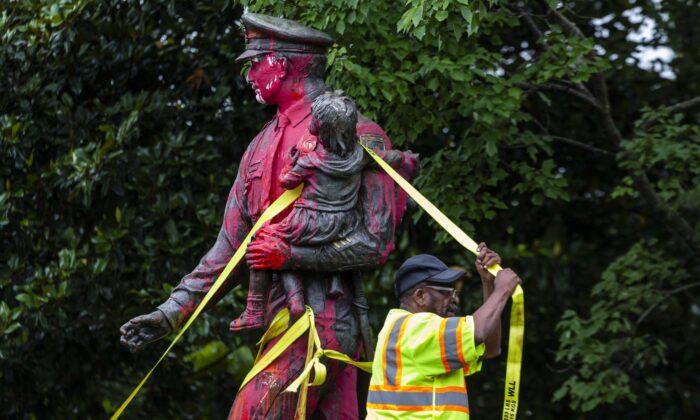Once a fabric begins to fray, the continuing weakening of the garment is almost inevitable. Each stress, each tug, further weakens the bindings of the cloth. Unless the tear is mended before it gets too far, the garment won’t last long.
Countries are a lot like fabric—various strands are woven together to become stronger and form an entity many times greater than any of its elements. The great question today is, what binds our national fabric together in the 21st century?
Once our countrymen largely shared a religious creed, a common set of ancestral origins, a language, and a literature. As we grew more diverse and extended our citizenship, other—more political—secular and economic forces served as the binding agents.
Destroying the Ties That Bind
Rightly or wrongly, statues of people once taken to be heroes in their community have been pulled down. Names of Founding Fathers have been removed from schools and buildings. Historic murals have been whitewashed or otherwise covered. We once nearly universally respected the flag; now, some see it as a political symbol undeserving of their veneration and something that can be used to divide us rather than unite us.I was in the second grade in 1976, and it was a year I will never forget. With the rest of the nation, our school celebrated the bicentennial of the Declaration of Independence and the birth of our nation. We made colonial crafts such as dipping candles and made silhouettes of Founding Fathers. We dressed in period costumes and even made a Betsy Ross flag quilt. We flew that flag proudly as a symbol of our nation’s origins, and we celebrated the woman who gifted it to the new nation.
The idea that even that old flag would be attacked as a racist symbol, and a major U.S. company would bend to political pressure and remove it from one of their products, would have been unimaginable to us then. We were celebrating together and seeking to unite the nation after the divisive times of Vietnam and Watergate, which we recognized as having so damaged our national fabric.
What becomes of a nation that’s lost its unifying symbols? What’s the fate of a nation when common values no longer bind the divisions that are always present in the economy and which have been too resilient in race and religion?
Upholding Symbols
During the Civil War, as divided and existentially threatened as we have ever been, both North and South still held some symbols in common—including the person of George Washington and the Constitution itself. They disagreed profoundly on the origins of our union and the meaning of the Constitution, but both pointed to common symbols. Still, it took the deaths of more than 700,000 of our countrymen in a brutal civil war before the fabric of our nation could be sewn back together once more. After the violence and bloodshed, we still had common symbols that aided in our healing and rebirth.Great civil rights leaders such as Martin Luther King Jr. pointed to the same foundational symbols that could unite America while they chastised America for its failures. They used those symbols to call on us to fulfill their promise and be worthy of our heritage. They didn’t tear down but built upon our common foundations. In his famous “I Have a Dream” speech, King called the Declaration of Independence and the Constitution “promissory notes” and called on us to live up to their conditions.
I ask again: What becomes of a nation when the symbols that unite us are undermined? What will be left to bind up our wounds and repair the fabric of the Republic if we have no common flag, no common heroes, or no common documents to revere and hold ourselves accountable to?
History doesn’t contain many examples of free peoples who are divided politically, economically, and socially remaining one strong nation for long. Even less so does its lessons give comfort for a people divided in those ways and who also no longer have common heroes, symbols, and documents to look humbly to, revere, and that can call them to the better angels of their natures.
What becomes of such nations when the symbols that unite their people are drained of their power? They either fly apart peacefully, fly apart violently, are held together by the military and police force of the state, or something intervenes to pull them once more together into a common enterprise with common symbols for a common good.
There will always be radicals out to undermine our unity to promote their own cause. The rest of us should uphold those symbols and documents in the face of the challenge, and we should hold corporations and politicians and news organizations to account and insist they serve our unity rather than bowing to the loudest grievance and political bully.





